Interference: Phaust’s Visual Ode to Pure Generative Systems
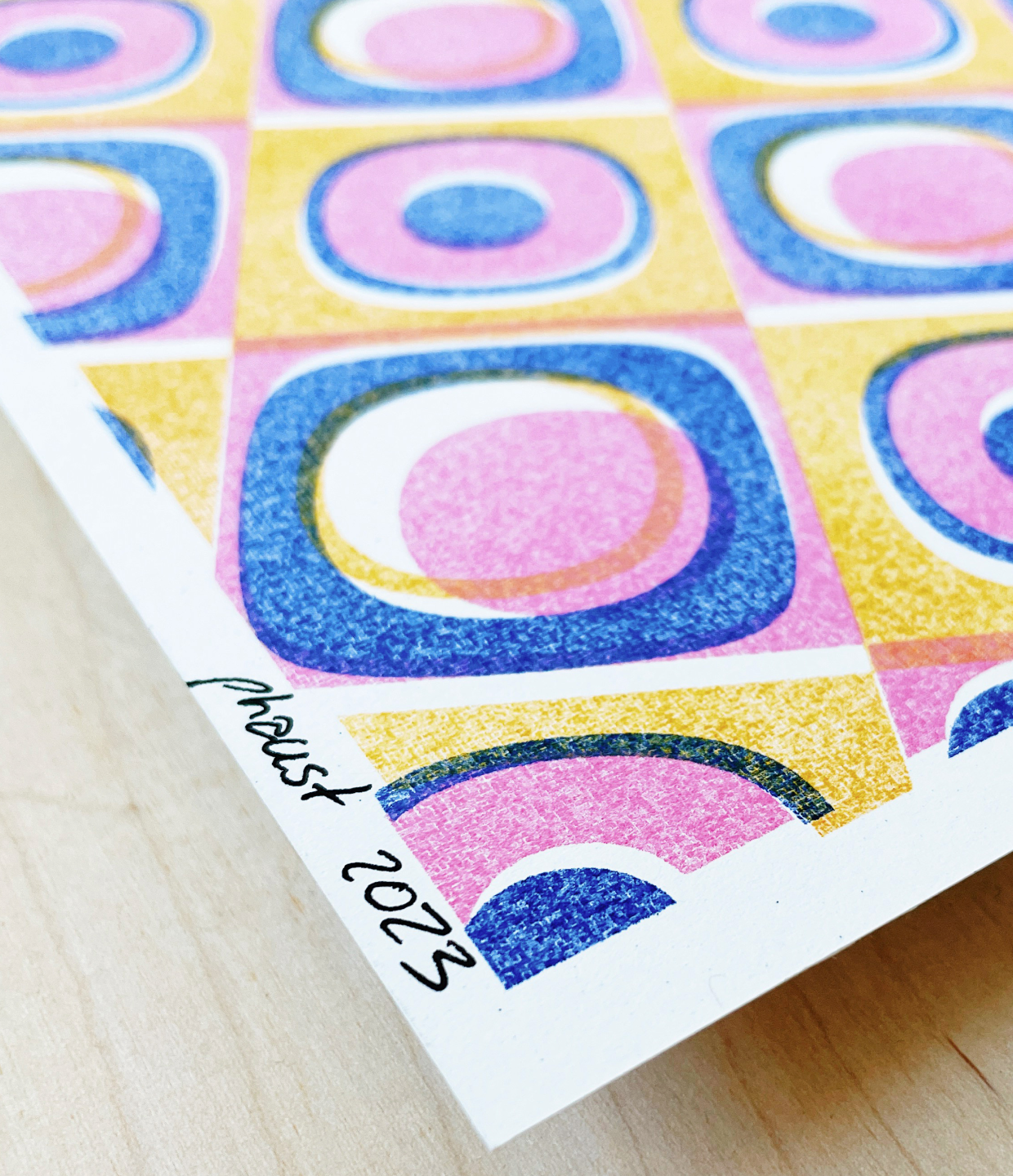
Interference by Phaust is a celebration of a pure generative system and also a game of hide-and-seek towards understanding the breakthroughs in science and math that enable such a system.
Interference is a series of 236 abstract patterns and color palettes. The shapes are familiar and organic. The Risograph printing technique reminds us of mass-produced leaflets and flyers. The works are joyous and easy on the eye.
Hiding just beneath the surface of any one image is a depth that calls into question the seeming banality of the image. We recognize the shapes as familiar because they are familiar. Every shape in the series is derived from a mathematical model of natural sound waves. These shapes are ubiquitous because they are natural.
Behind each work is mathematical purity, bounded color palettes reminiscent of the fauvist color theorists, and historical depth.
Viewing multiple pieces reinforces the profoundness of the work. Each image is an output of a single generative instruction set, like 236 leaves of a tree that could make billions more, each one unique.
Interference is a celebration of a pure generative system and also a game of hide-and-seek. The simplicity of the images is a red herring that hides the science and virtuosity that came before them. But the veil is paper-thin: even a mild dose of curiosity by the viewer reveals a path toward understanding the breakthroughs in science and math that enable such a system.
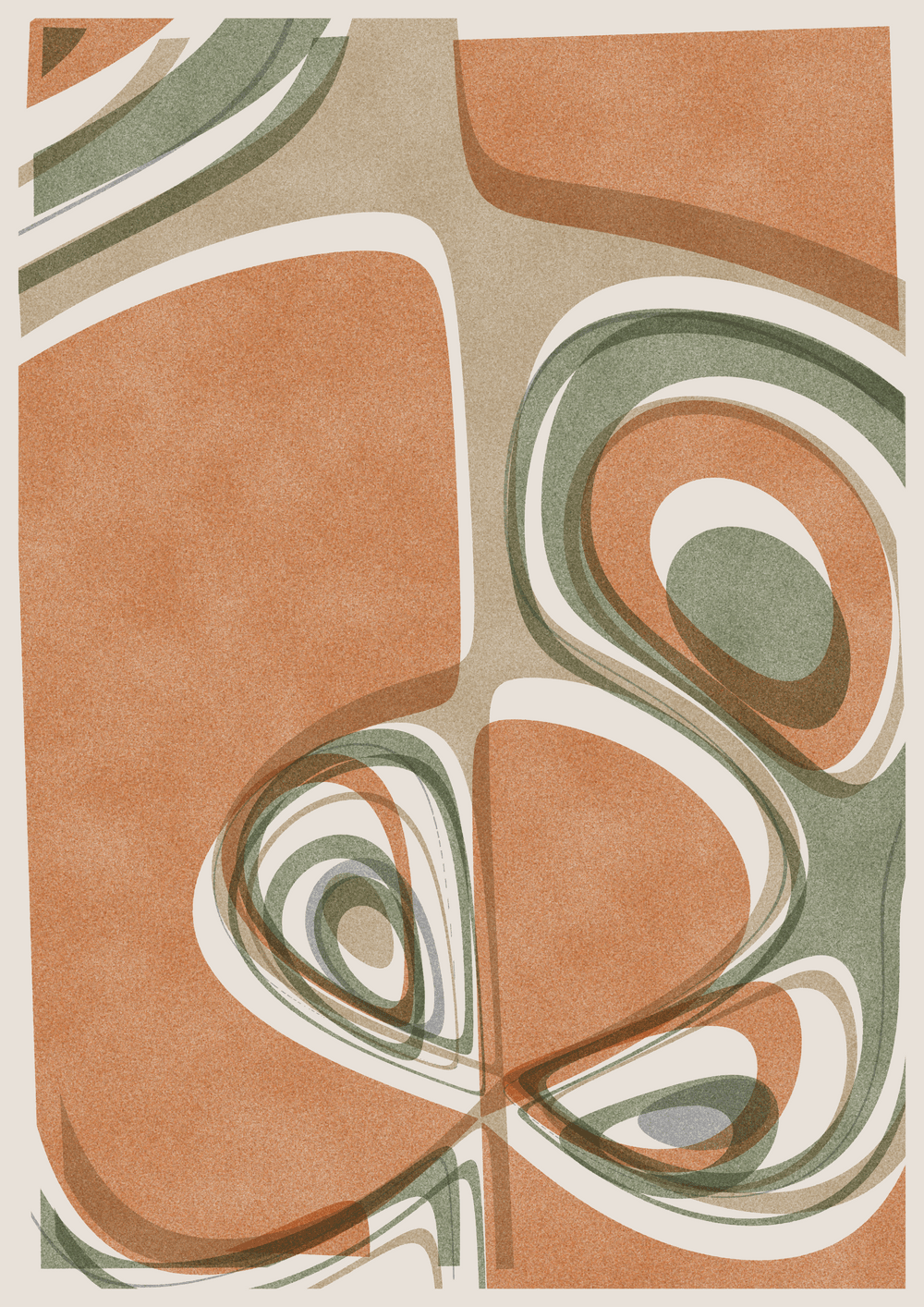
interference #95
0.05499 ETH
($168.89 USD)
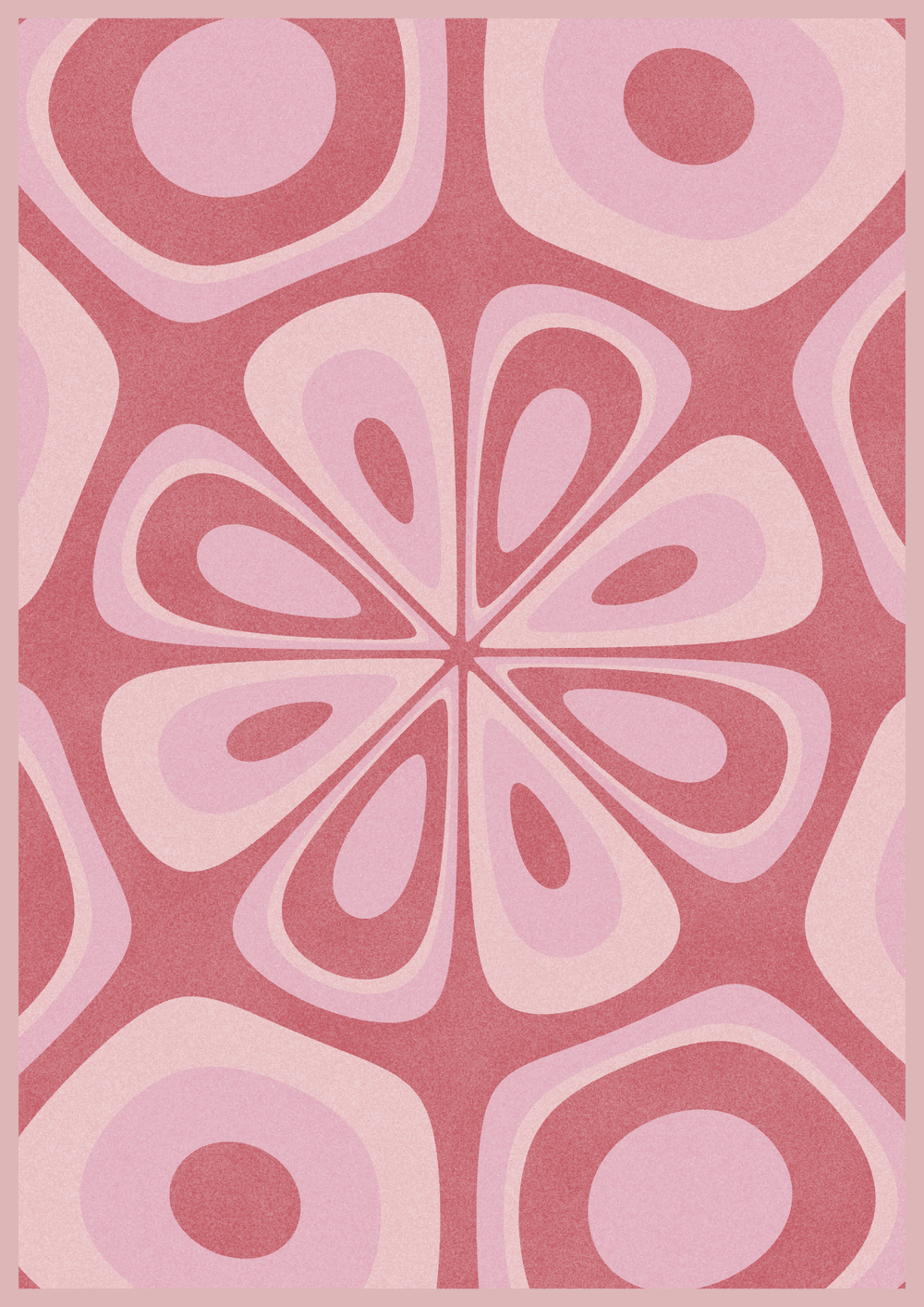
interference #184
0.055 ETH
($168.92 USD)
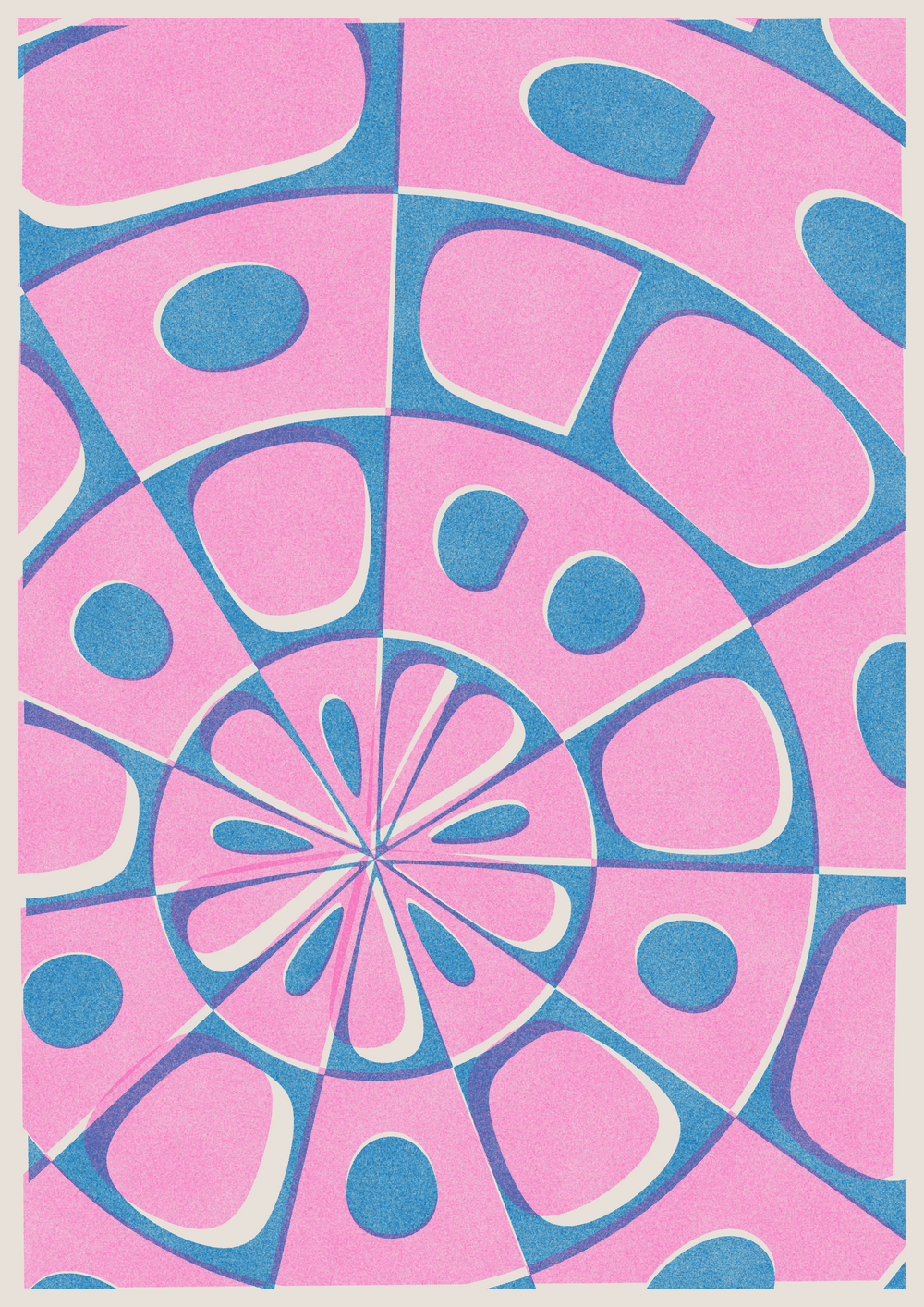
interference #87
0.06 ETH
($184.28 USD)
Ernst Chladni & Sophie Germain
In 1787, Ernst Chladni took a violin bow and drew it against a metal plate lightly covered with sand. When the plate reached resonance the sand settled on particular nodal lines–leaving what is known as Chladni patterns. For the first time, sound could be visualized, and as the tone and various other factors were altered, the Chladni pattern changed too.
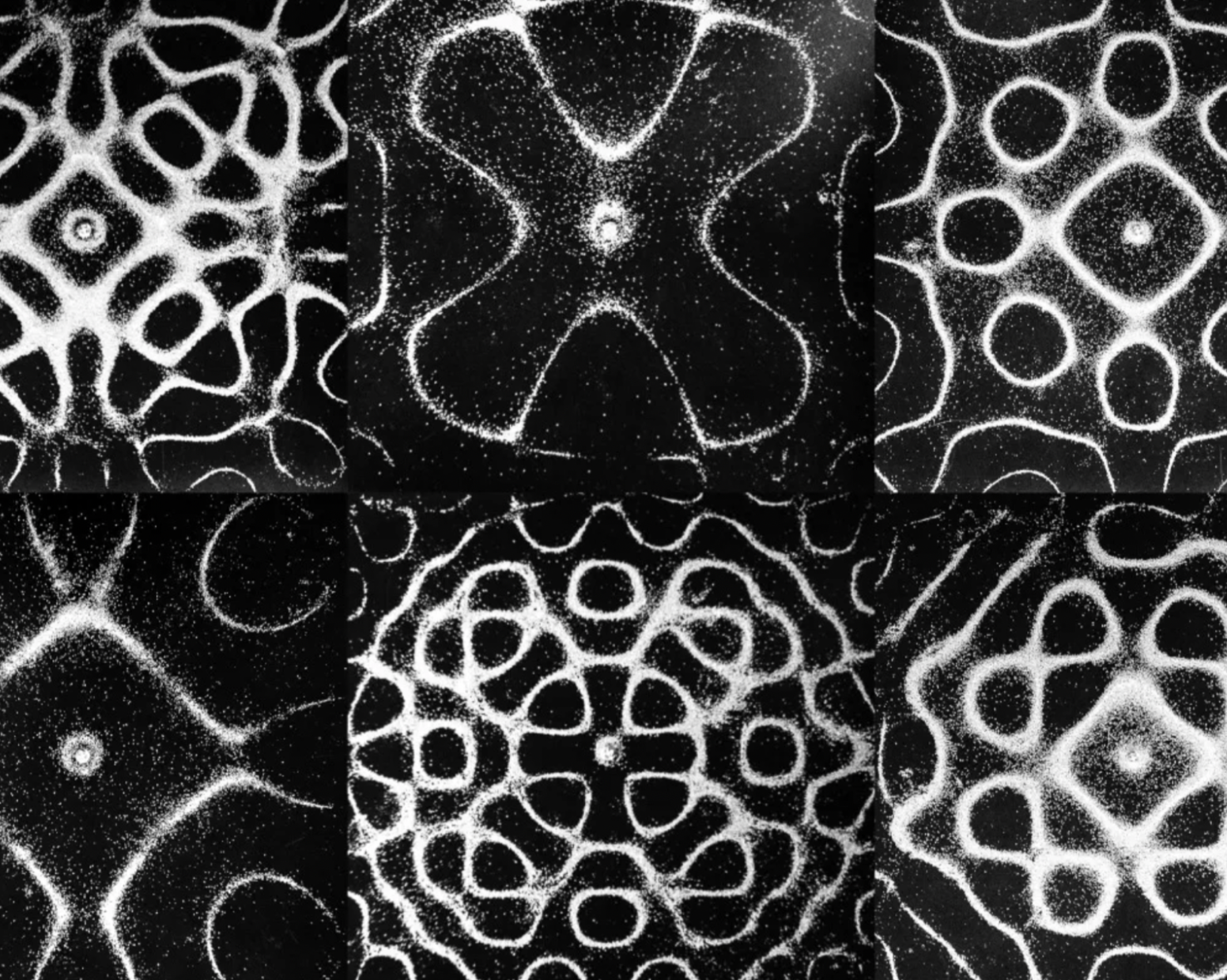
Results of Ernst Chladni's experiments
Twenty years later, the French mathematician Sophie Germain derived the mathematical theory underlying Chladni’s observations. It took centuries for her to be recognized, but her work proved to be important in fields as diverse as acoustics and instrument design to quantum mechanics and electron orbitals.
Seeing Sound Redux, with 21st Century Tools
Chladni made it possible to see sound as never before, but he had only rudimentary tools at his disposal: steel, sand and a violin bow. He couldn’t even photograph his results: the images were hand-drawn. And he was not armed with Germain’s theoretical framework.
The standing sound waves created by the violin bow do not move in space, so the minimum amplitude (node) and maximum amplitude (antinode) remain fixed on the plate. This causes the scattered sand to collect at the nodes as it is shaken from the antinodes. Traditional Chladni patterns exclusively show us the pattern of the waves’ nodes.
Phaust picks up that gauntlet and leverages their backgrounds in physics and math to let us see cross sections of the sound waves that are above and below the nodal plane of the steel plate.
The underlying sound waves that create the classic Chladni pattern are identical to those shown in Interference with two key interventions. Because Interference is encoded using Germain’s equations, Phaust is able to show the entire range of the standing waves crossing Chladni’s plate instead of just the nodal lines. Adding to this visual variety, Phaust chose to map polar coordinates in addition to standard cartesian. This coordinate system mapping distance and angle from a reference point creates a distinctive tapered aesthetic in contrast to the rounded shapes of the cartesian mapping.
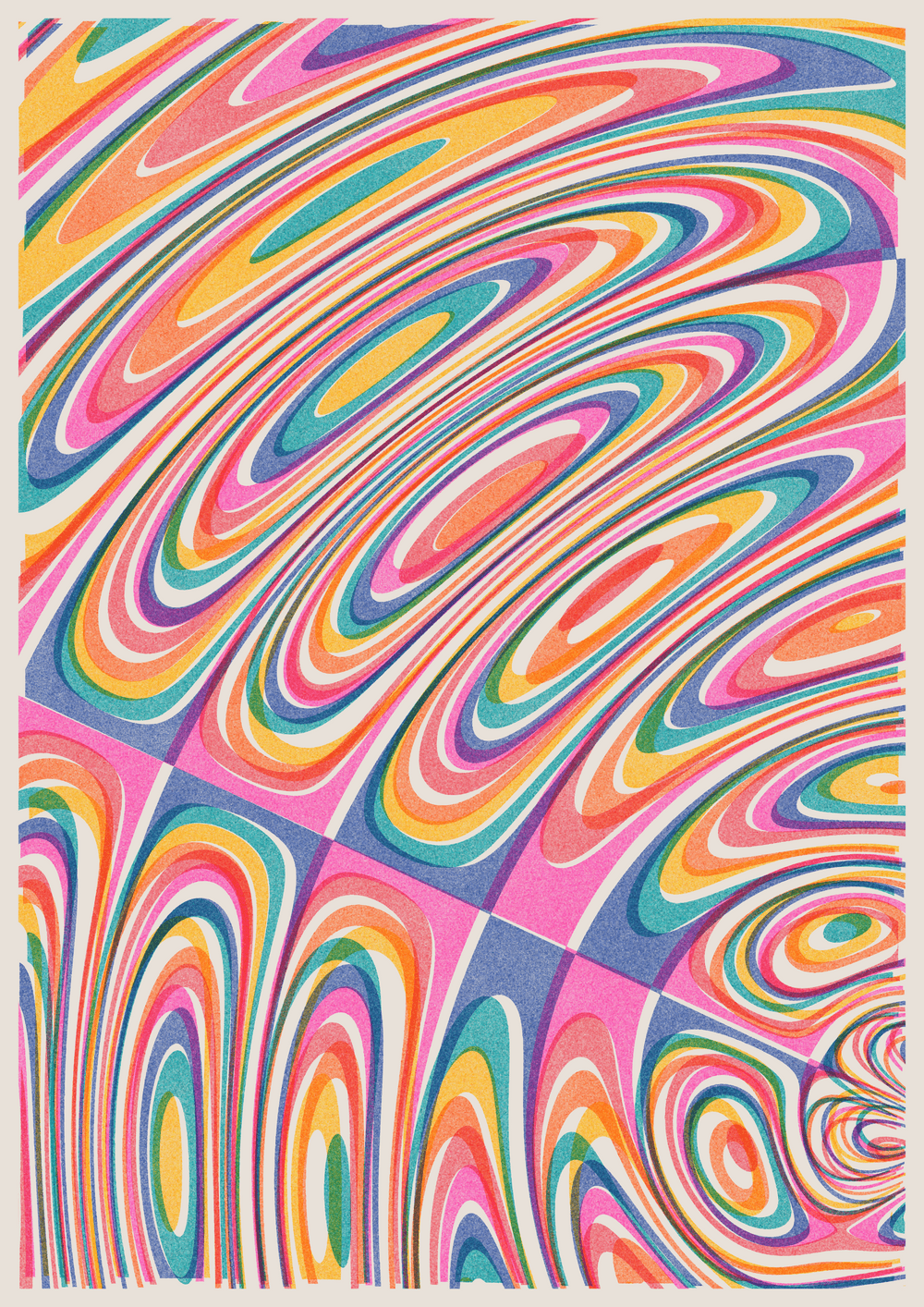
interference #166
0.069 ETH
($211.92 USD)
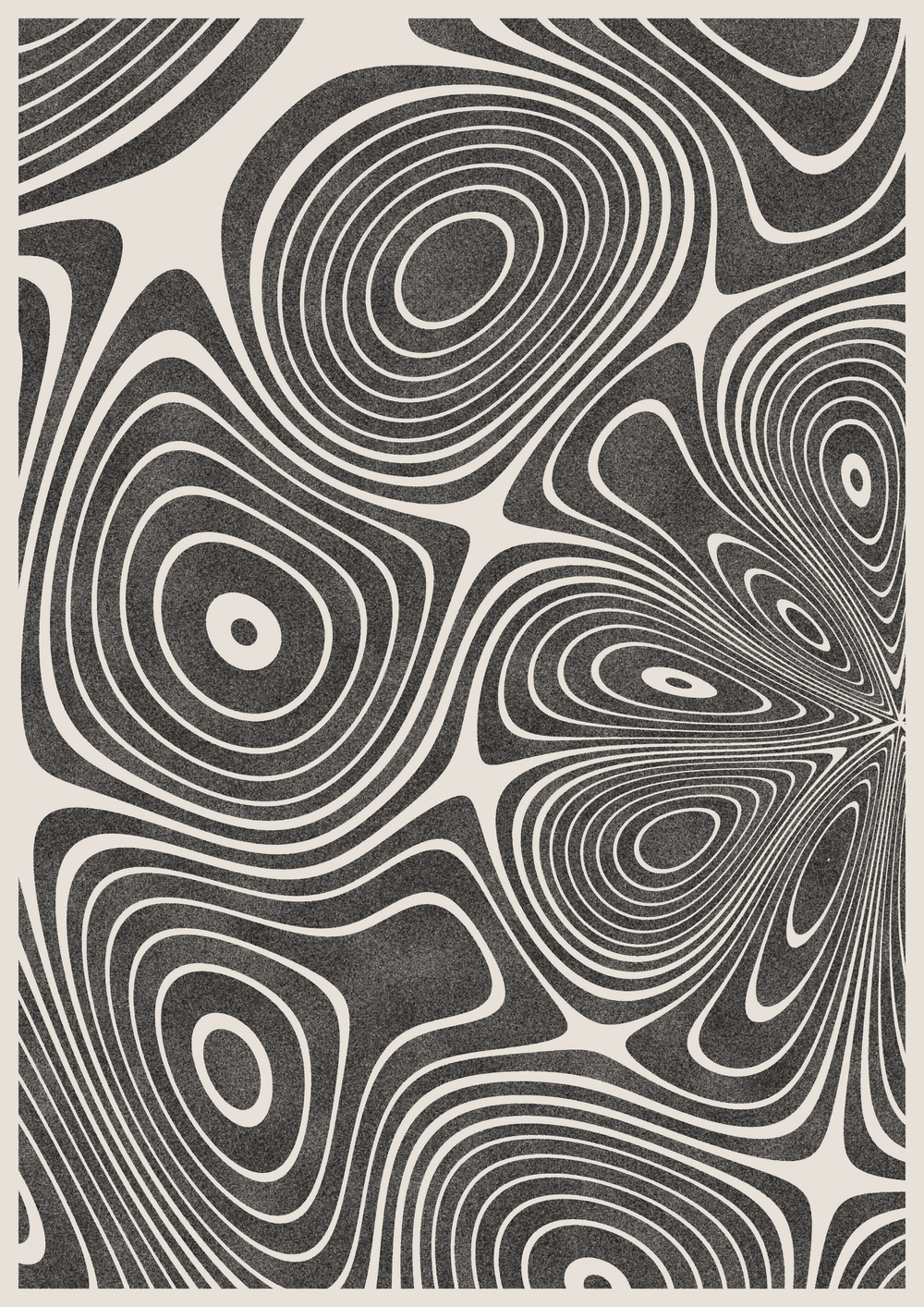
interference #135
0.2 ETH
($614.26 USD)
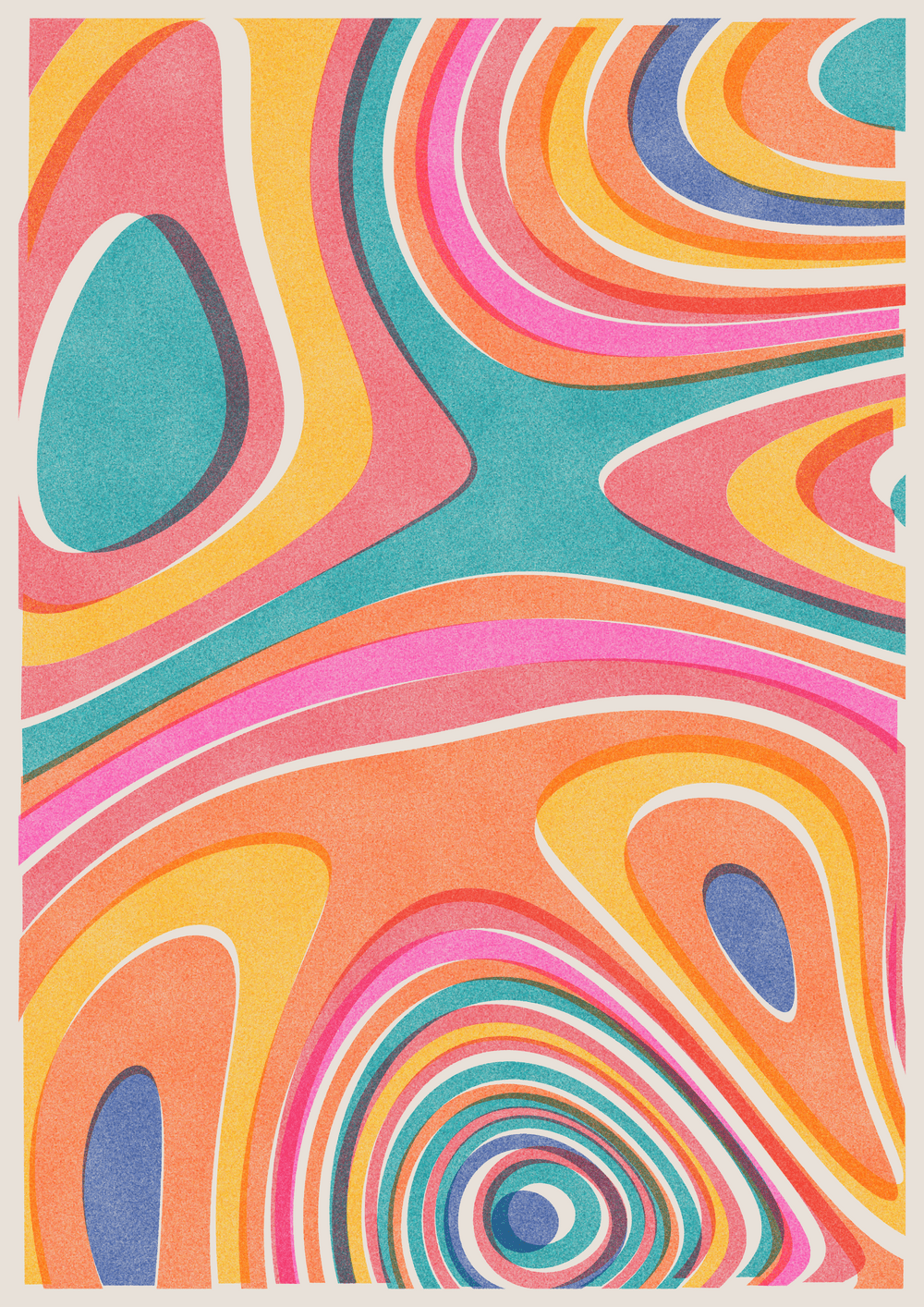
interference #3
A handful of mathematical functions and transformations create a dramatic variation of compositions.
This mathematical and conceptual simplicity speaks directly to the beauty of generative systems. By foregrounding a familiar physical phenomenon, the vibration of sound, Phaust elevates and celebrates the unique beauty of generative art.
Vibrant Risography Prints
Phaust drew upon a 1980 invention by the Riso Kagaku Corporation to bring these forms to life–a machine that looks like a photocopier but works like a screenprinter. The Risograph uses stencils and vibrant semi-transparent spot color inks to print a single layer of color at a time, producing prints that are vivid, textured and unique thanks to subtle imperfections in the printing process.
Phaust based the color palettes of Interference on a specific brand of riso ink, featuring 34 spot colors. The series emulates how the inks interact with each other when layered (and layered on different papers)
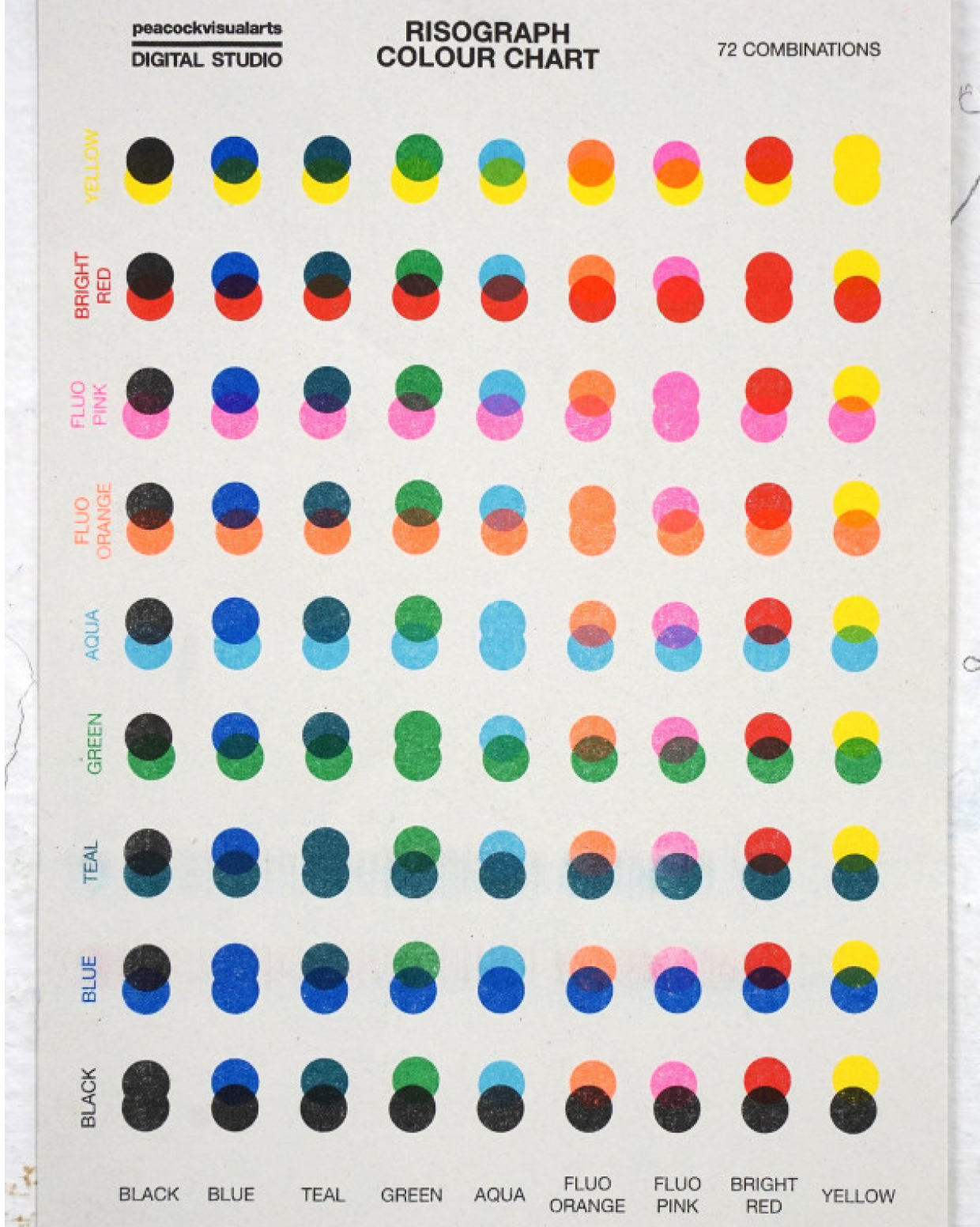
Risograph ink color chart
In order to dial up the playfulness of the works, Interference embraces the quirks of Risograph printing.The works use semi-transparent colors derived from Riso inks. It exaggerates the mis-alignment found on Risograph prints, at times suggesting a cut-out or collage effect. It mimics the texture of Risograph prints by not plotting solid bands of color but instead half a million distinct particles, harking back 200 years to sand particles settling along nodal lines on Chladni’s plates.
Despite being created for mass production, the realities of the manufacturing technique creates small differences in each work and ultimately a related set of unique objects. In these oddities we see a second representation of generative systems in the natural world.
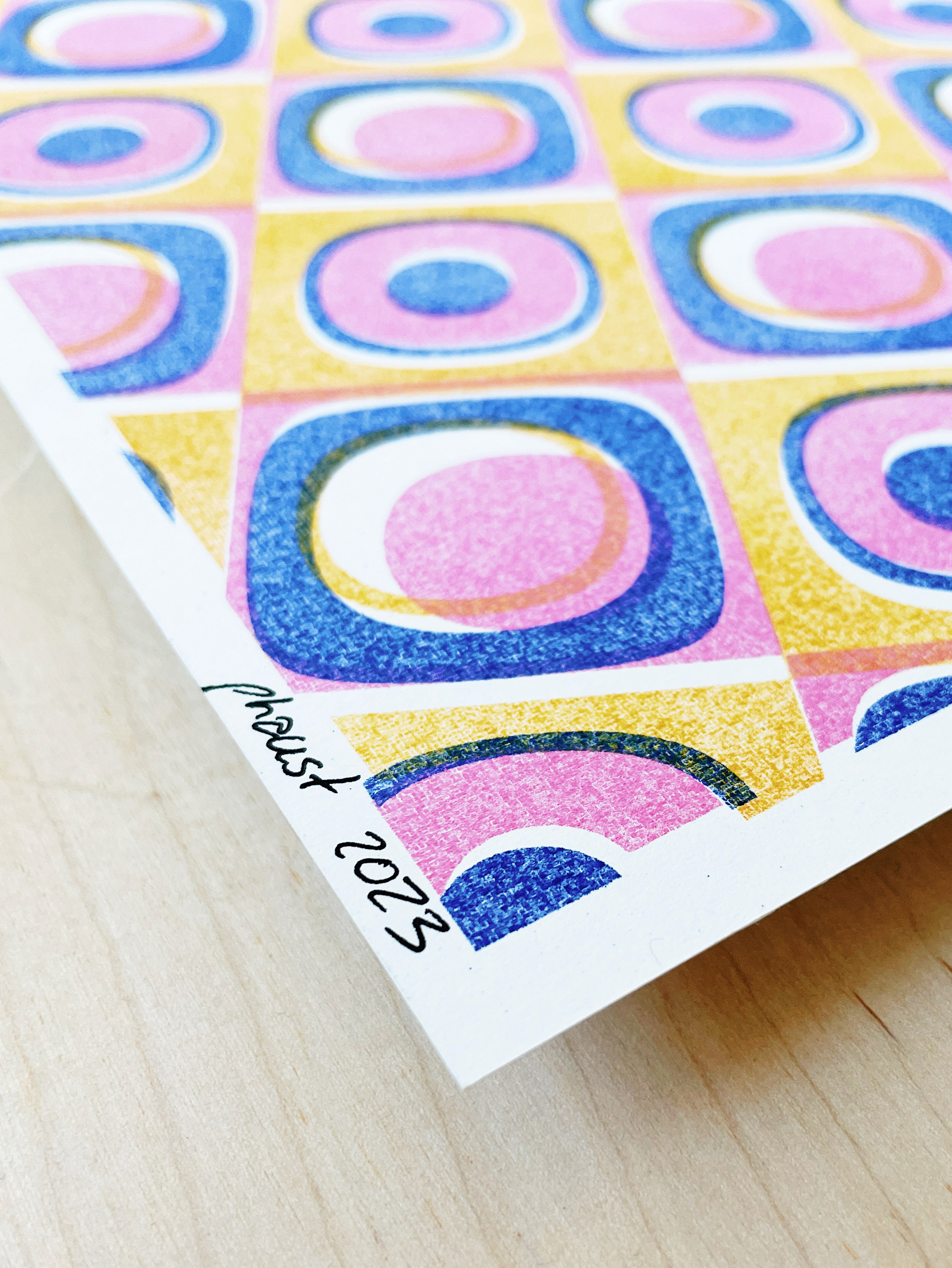
Details of the risography print for Interference #113
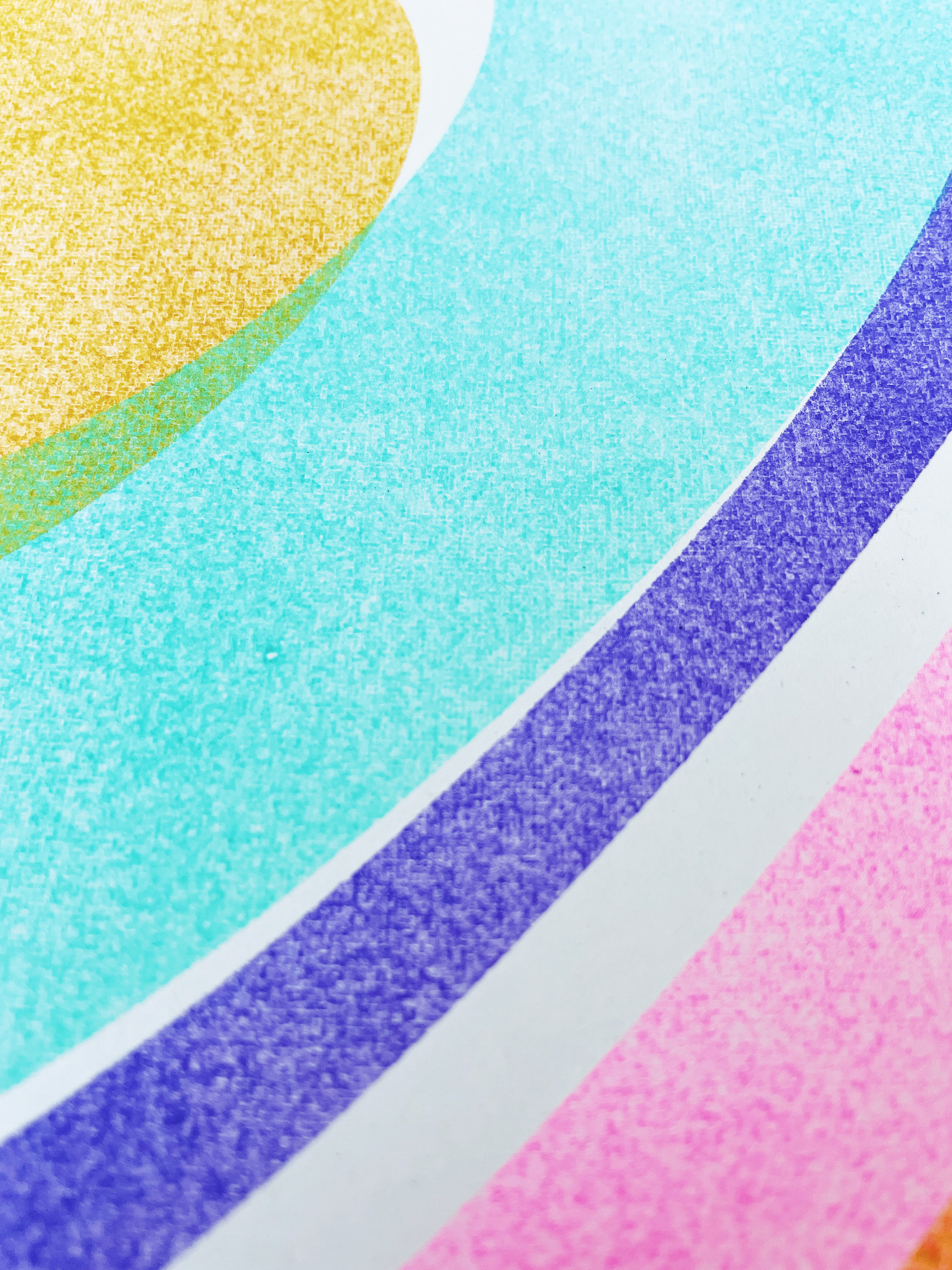
Details of the risography print for Interference #43
To learn more about acquiring a work from Interference by Phaust, view the series at tonic.xyz.
More stories
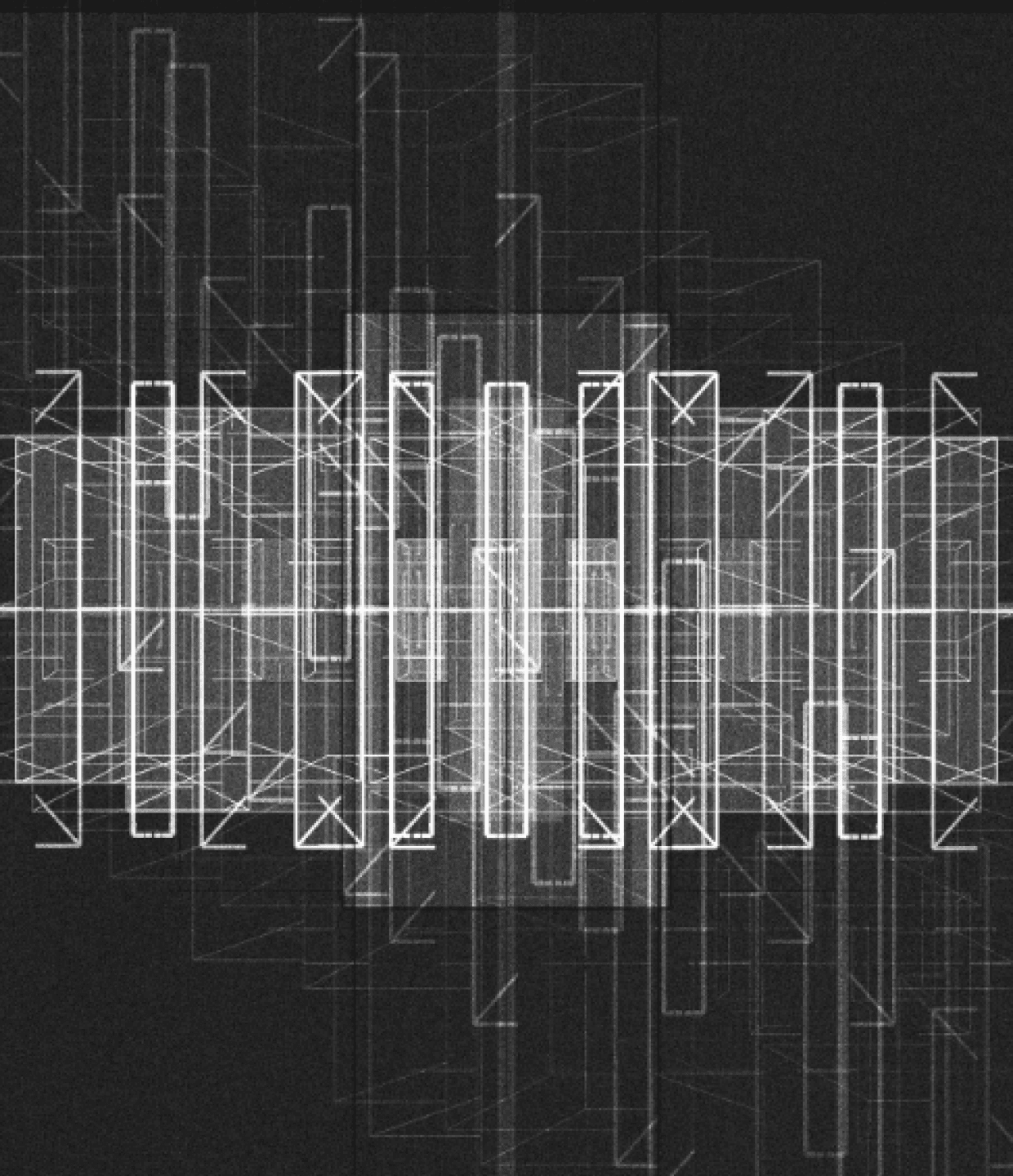
Introducing ESCAPE by Iskra Velitchkova
ESCAPE by Iskra Velitchkova is at once an archive of the artist’s personal history and a self-referential exploration of how we seek freedom and escape in art.
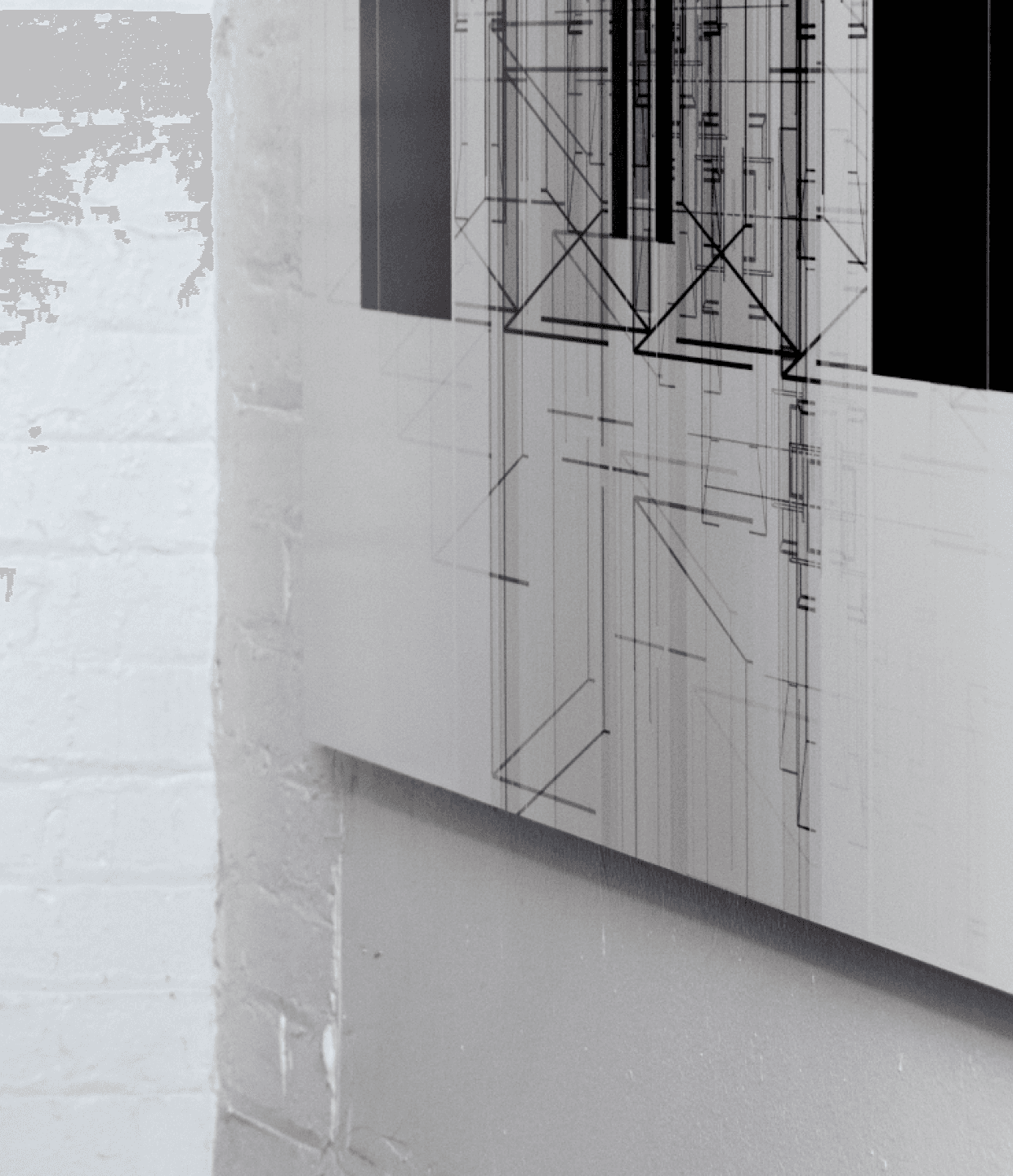
Unique Physicals, Series, ESCAPE
Iskra Velitchkova’s ESCAPE with Silver Gelatin Printing
Iskra Velitchkova’s ESCAPE is influenced by analog photography and leverages silver gelatin to its fullest for its unique physical offering.
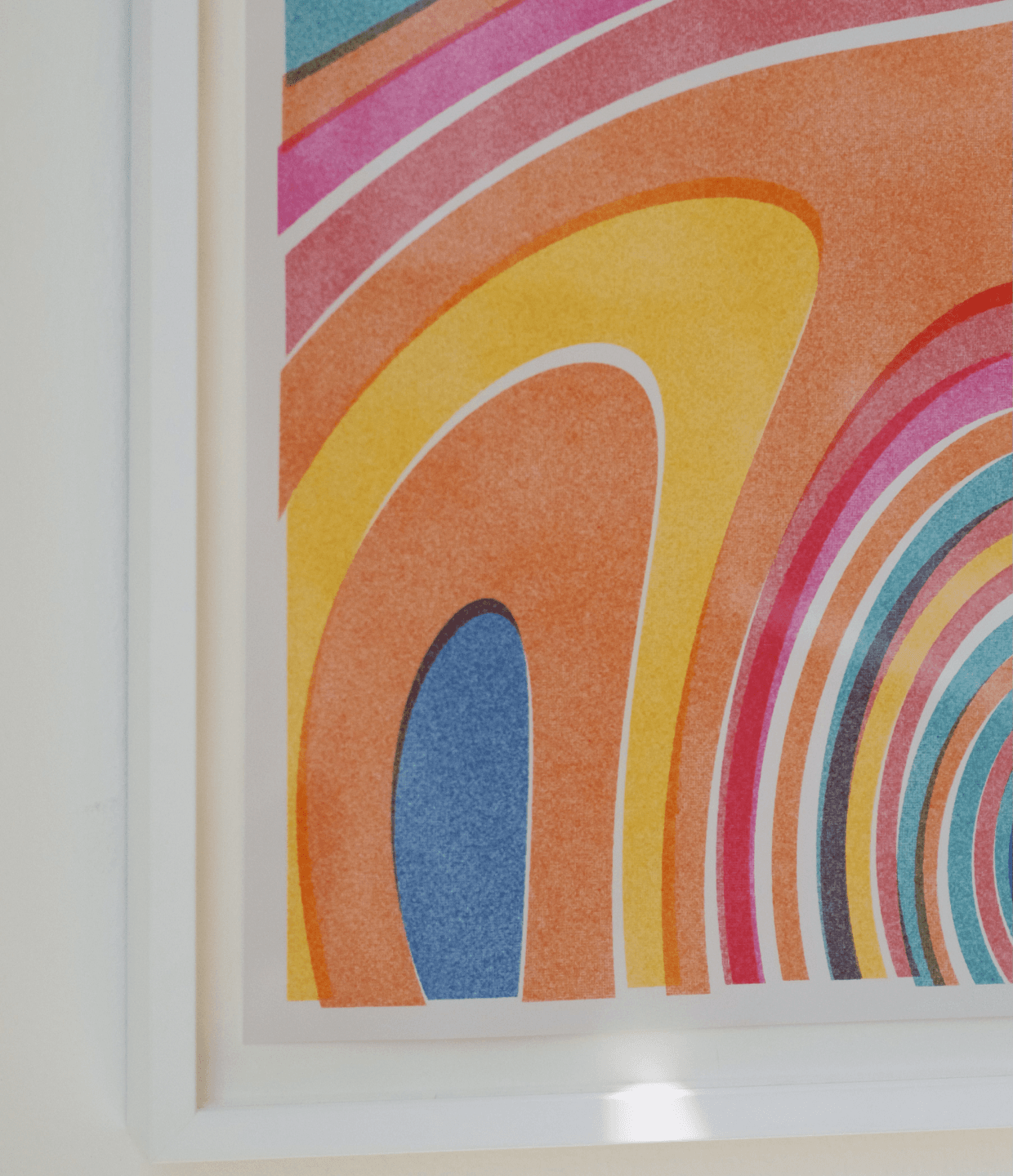
Features, Series, Compare & Contrast
Pointilism & Divisionism in Intimità and Interference
The experiments of Divisionist and Pointillist painters influenced our understanding of color and contrast, enabling new forms of artistic impression like the works of Phaust and Stefano Contiero.


Stay in the loop on upcoming drops, exclusive access, and more.